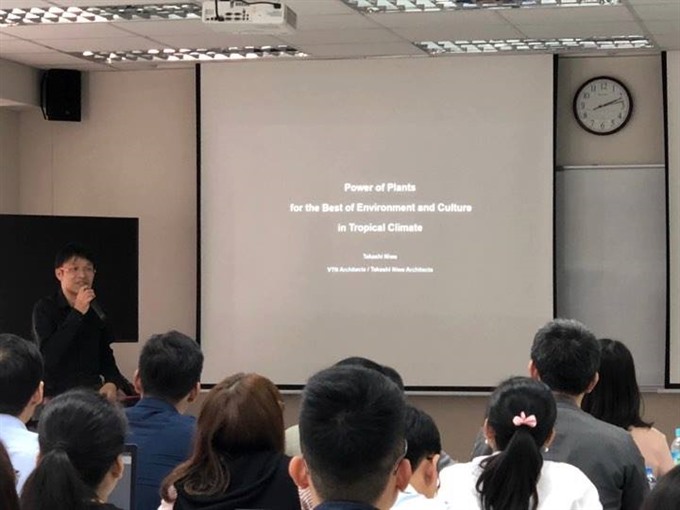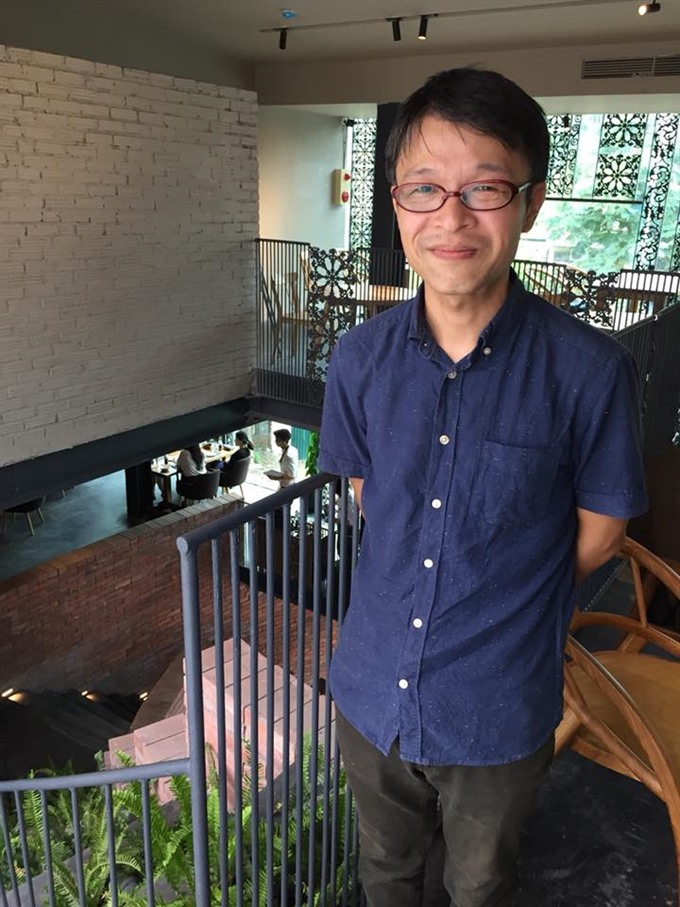Viet Nam News
Tran Hoang Nam
Nearly a decade ago, the uniqueness of Ha Noi’s culture and architecture drew Japanese architect Takashi Niwa to live and work here. Now, Niwa says he still feels there’s more to learn about the city as he seeks to develop designs inspired by Ha Noi.
Niwa was born in Japan. He studied architecture professionally and earned a master’s degree at the Tokyo Metropolitan University. He has entered many international competitions and projects located in Japan and Malaysia.
In 2010, he moved to Viet Nam and co-operated with architect Vo Trong Nghia on many projects that went on to win major awards.
Niwa met Nghia in Japan in 1997 when they studied architecture together. Their friendship began in the dormitory where they both lived and as they grew in their careers developed into an architectural partnership. It was Nghia’s invitation that led Niwa to Viet Nam.
They decided to focus on two themes in their designs: green architecture and the use of bamboo.
Bamboo projects fit the traditions of Vietnamese culture. On remarkable example of architecture using this material is the Bamboo Wing Restaurant at Flamingo Dai Lai Resort in the northern province of Vinh Phuc, which received many international prizes.
Green projects are also a unique style that brings many environmental benefits not only for the users but also for the city and neighbours. The duo’s Farming Kindergarten project in the southern province of Dong Nai was very meaningful to Niwa.
“We tried to make it an experiential learning place for 500 children whose parents work at a shoe factory, using a sloping roof with gardens,” said Niwa.
“The project won many global prizes thanks to the good results.”
 |
| Next generation: Architect Niwa often hosts workshops with students in Viet Nam. — Photo courtesy of the architect |
Inspired by Ha Noi
For Niwa, Ha Noi is an interesting city with great potential for architecture.
“The traditional material, local culture, even the severe climate can contribute to making good architecture, which will bring many cultural values together with environmental benefits, including comfort,” he said.
“As a foreigner, I can see the valuable potential of Ha Noi to be more unique and original. I would really love to see Ha Noi in the future as a unique city, a combination of modernity and tradition.”
“During my eight years staying in Ha Noi, the city has changed a lot,” he said.
“One good thing is that people are planting more trees. The city has become cleaner though it is still messy.”
“Because the land price is too expensive, it is very difficult to maintain beneficial common open space in the city. The fast development has been breaking and eating up Ha Noi’s cityscape, which is one of the best tourist destinations to discover.”
The architect pointed out that there are many buildings with good potential to be rehabilitated and preserved to keep the town’s unique aesthetic. However, not many architects are able to make use of the potential because of the city’s inflexible preservation strategy, he said.
“Preservation is not only keeping the building itself,” said Niwa.
“Reusing old buildings to take advantages of their potential for facilities can create a very unique destination for people to enjoy and can also be good for tourism with good design. In this way, the owners can be sure to utilise and preserve the good conditions of the building, I think.”
“I’m really curious to create an example to show the usage of an old building in cooperation with the Government, owner and the other architects.”
 |
| Inspired by the city: Architect Niwa said he wants to learn more about the city and develop designs inspired by Ha Noi. — Photo courtesy of the architect |
Looking ahead
In 2018, Niwa started his own office, Takashi Niwa Architects in Ha Noi, to develop more projects with the theme “the best of environment and culture”.
Apart from professional work, Niwa participated in different projects relating to architecture in Viet Nam, such as the workshop "Think about Green Building in Viet Nam" where he discussed the challenges of green buildings in the country as it develops. He also spoke at a conference called “Power of Plants for the Best of Environment and Culture in Tropical Climate” which explored plants as the most influential material for Vietnamese culture.
Recently, he hosted an exhibition titled “The Best of Environment and Culture” which listed eight elements of architectural design including Environment, Culture, Material, Energy, Emotion, Activity, Time and People.
Niwa is especially interested in school and educational projects.
“Through suitable designs for children, they are able to develop activities and discover the potential of their future life,” he said.
Some of his favourite projects in Viet Nam are libraries. When Niwa visited universities and schools for workshops and exchanged with students, he found that there are too few books to serve research and exploration needs. He stressed the need to develop the system of libraries as an important piece of infrastructure for future.
He co-operated with Japanese and Vietnamese colleagues to start a volunteer activity called Architectural Book Bridge this year. They connected with retiring Japanese architects and encouraged them to donate their books to the universities in Viet Nam. — VNS